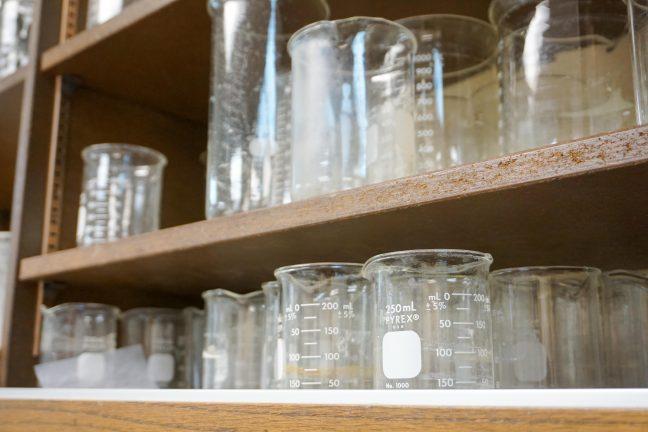University of Wisconsin researchers have an extensive history of making cutting edge discoveries in the field of molecular biology, and their works continue to inspire the technologies of today.
In the 1960s, UW biochemistry professor Har Gobind Khorana discovered how the genetic code translates to amino acids, the fundamental building blocks of the proteins which drive all human and animal physiology. In 1975, UW oncology professor Howard Temin discovered the reverse transcriptase enzyme, a breakthrough that challenged the central dogma by revealing that the genetic code could flow backward from RNA to DNA.
Former UW researcher and physician, Dr. Jon Wolff, is no exception to this track record of excellence. Wolff was well-known in the Madison area and beyond as an exceptional physician and forward thinker in the field of genetics, according to his colleagues. Wolff passed away in April 2020, but his legacy lives on in the spirit of his colleagues and the scientific work he left behind.
Dr. David Wargowsky, a physician who worked with Wolff at UW Health, recalled Wolff’s vast knowledge and intellect.
“[Wolff] was incredibly bright and knowledgeable — he knew about extremely rare metabolic conditions that others had never heard of,” Wargowsky said. “He was a wonderful resource for the hospital, his patients and the University.”
The Discovery that Changed Gene Therapy Forever
Wolff’s research into the delivery of naked DNA or RNA into the muscle cells of a living organism, is now more relevant than ever, as it spearheaded core principles that helped inspire the complex gene therapies we see today, from cancer treatment to chronic disease management. Also, Wolff’s work was foundational to the development of the mRNA COVID-19 vaccines.
According to the CDC, two of the three COVID-19 vaccines available in the U.S. are mRNA-based. These vaccines deliver a genetic blueprint in the form of mRNA, which instructs cells to produce proteins similar to those found in the SARS-CoV-2 virus, popularly known as the coronavirus. This trains the immune system to recognize the virus and helps vaccinated individuals elicit an immune response if they are infected.
The mRNA COVID-19 vaccines are the first of their kind, according to the CDC. Delivering genetic material to human cells unharmed and ready to be translated to proteins was once considered a daunting task, and at one point was thought by some to be impossible. In spite of this, Wolff and his team of researchers set out to advance this area of study.
One of Wolff’s most influential research articles, “Direct gene transfer into mouse muscle in vivo,” was the first to show that naked DNA or RNA could be delivered to the muscle cells of a living organism and expressed as proteins. According to the article, in the past, this had only been accomplished using viral vectors or other carrier methods which were less effective.
Dr. Gyula Acsadi, a co-author of the paper, said Wolff was originally interested in working on gene therapies for Parkinson’s disease, which spurred this proof-of-concept study. As stated in the conclusion of Wolff’s 1990 article, they foresaw that intramuscular injection of genes encoding viral antigens may provide an alternative approach to vaccine development. Acsadi said that at the time, this concept was completely new.
When asked if Wolff’s 1990 article was fundamental to COVID-19 vaccine development, Acsadi pointed to the sheer number of times it has been cited by researchers.
According to the National Institutes of Health’s PubMed database, the article stands at 634 citations, with seven coming from the past month alone.
“This paper has been cited many times by vaccine researchers … I assume that people recognize that this was a fundamental paper for this work because they are citing it almost constantly,” Acsadi said. “I feel that this discovery, especially showing that injection into muscle made such a strong response in terms of protein production, is important to today’s researchers.”
Though the manufacturers of the mRNA COVID-19 vaccines do not specifically reference Wolff’s work, Acsadi believes that Wolff’s influence on these technologies is strong. This is supported by citations of Wolff’s work in supporting research, which show that their work had direct influence on today’s therapies.
Wolff’s Work After the Discovery
After completing the 1990 article, which helped make Wolff famous among gene therapy researchers, he continued his academic work and went on to publish hundreds of articles. Many were published in prestigious scientific journals such as “Science” and “Nature.”
Acsadi said Wolff eventually went on to co-found Madison-based company Mirus Bio, which was heavily influenced by his research at UW. At Mirus, Wolff and his colleagues developed gene therapy transfection reagents, among other pharmaceutical products.
Acsadi said Wolff’s work with the company included development of new liposomal delivery systems, small hydrophobic packages which protect genetic material from degradation and are readily taken up by cells. A similar liposomal technology is a key component of the COVID-19 vaccines, which allows the mRNA to reach cells unscathed.
“His legacy is promoting DNA and RNA as therapeutic, and I think that [his work] has opened up the avenue of thinking outside of the box by using nonviral gene therapy techniques, which currently has proven clinical applications,” Acsadi said.
He said in the past most gene therapies relied on viral vectors for gene delivery, which is no longer a limitation to current therapies, in part due to Wolff’s work.
Today, ClinicalTrials.gov lists over 400 active gene therapy studies occurring all over the world. Many of these studies involve DNA and RNA based vaccines, which ostensibly were influenced in some way by Wolff’s work.


